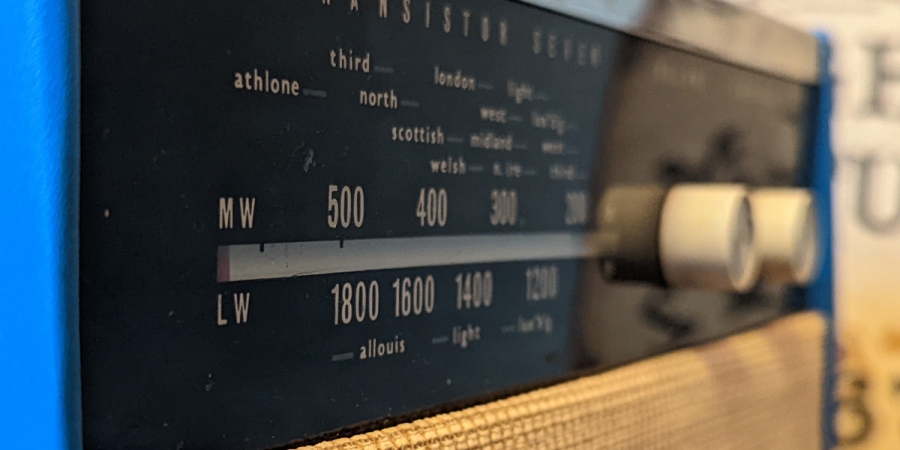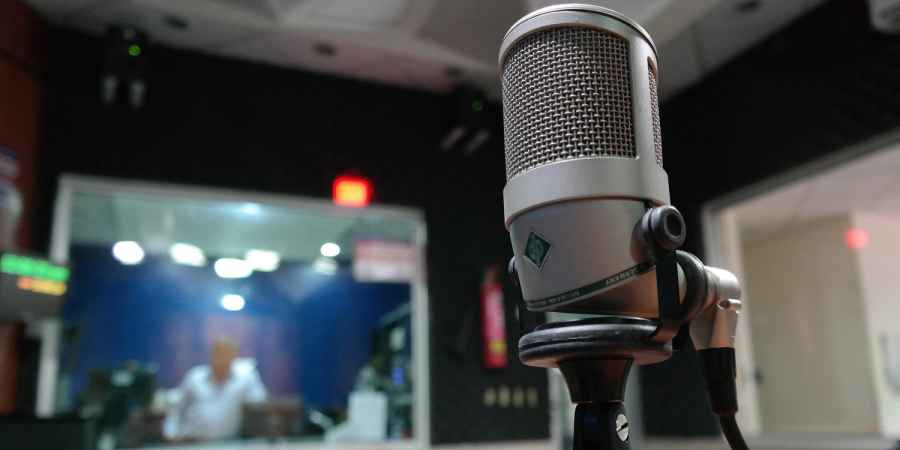

This page is more than two years old.
To celebrate World Radio Day, we take a look at how radio technology has influences paranormal research and become a key part of investigations. The annual day aims to raise awareness of the importance of radio and how it brings people together across every corner of the globe, could it also be bringing the living and the dead slightly closer?
In recent years, the use of radio-based technology in paranormal investigation has become increasingly popular. Ghost hunters use an array of gadgets to attempt to communicate with spirits. Some are based around the idea that ghosts can affect environmental factors such as temperature, humidity or electromagnetic fields, others are rooted in the idea that ghosts can manipulate radio waves.
Radio waves are a type of electromagnetic radiation that make up a part of the electromagnetic spectrum. This range of different types of electromagnetic radiation, each with its own unique wavelength and frequency, is commonly linked to paranormal investigation. Devices like the popular K-II meter can detect a limited part of the spectrum, but the part of the spectrum that is used to broadcast radio signals also has strong ties to the history of paranormal research.
One technique used in paranormal investigation is "spirit box" communication, which involves using a modified radio to scan through frequencies. As it does, the characteristic sound of fleeting bursts of white noise and static can be heard. It is hoped that within these radio sweeps, the sound of spirit voices will be heard. This is based on the idea that spirits are able to change or influence these bursts of audio, or manipulate radio waves to form audible speech in the form of words or even sentences.
The first of these devices was called the Frank's Box, which was invented by Frank Sumption. Some spirit boxes have various settings which allow investigators to tweak which bands the device scans through and how much of each frequency step you hear, usually ranging from a hundredth of a second up to a second or more.
The fact that spirit boxes sweep through the whole of the broadcast range of the electromagnetic spectrum suggests that ghost don't occupy just one specific frequency band of it. This should mean that, if these sounds really are the voices of spirits, we would constantly hear bursts of ghostly sounds bleeding over radio programs.
It makes more sense, that if ghosts do some how exist within the part of the electromagnetic spectrum that is used for radio broadcasts, that we would hear clues to their existence. This wouldn't necessarily mean hearing snatches of voices, as sounds need to be encoded (modulated) in order for the radio set to receive them and convert them back to sound. Instead, we should be listening out for an unexplained burst of noise or static as a spirit passes nearby. Ideally this should be repeatable and happen on demand to demonstrate there is an intelligence behind the interference. At the very least this burst of static should coincide with other measurable or observable paranormal activity.
If ghosts can manipulate radio waves or interfere with radio broadcasts, then this should be an ever-growing problem for broadcasters due to the presumably ever-increasing number of spirits that must exist, especially when you consider that worldwide there are 120 deaths every hour. Broadcasters would have no way to stop this ever-increasing spirit interference.
However, it is possible that the use of a spirit box could be more about the investigator acting as a medium, rather than any type of technical manipulation of radio waves within the device. A medium is someone who is believed to have the ability to communicate with spirits, and it is possible that some investigators may be using the spirit box as a tool to enhance their mediumship abilities.
Some investigators believe that they have a natural ability to sense or communicate with spirits, and the spirit box may serve as a tool to amplify or focus these abilities. They may use the white noise and static generated by the device as a means to access a "spirit frequency" or to "open a portal" for communication with spirits.
The idea of using radio to communicate with spirits goes back long before Frank Sumption's invention in 2002. Konstantin Raudive was a Latvian parapsychologist and a pioneer in the field of electronic voice phenomenon (EVP). Over his career he made thousands of recordings of examples of EVP. One of the methods he used to capture these sounds involved a normal unmodified radio receiver that wasn't tuned to any station so that it just produced white noise. He would record this sound and later analyse the recording for voices.
Around the same time an Italian medium named Marcello Bacci was giving public performances of his spirit communication method that also involved the use of an unmodified radio. He started out by using an old military radio, but eventually moved on to a larger vacuum tube radio receiver. In his demonstrations he'd tune the radio to an empty frequency and after a while the white noise from the speakers would die down and the voices of the spirits would come through.
It's not just FM broadcasts that relate to paranormal research. Two-way radios, also known as walkie-talkies, can also be used in paranormal experiments in a few different ways. Some investigators use walkie-talkies as a means of communicating with spirits. They encourage any spirits that might be present to answer questions or communicate through the radio.
Two-way radios can also be used to remotely monitor the activity in a location being investigated. For example, an investigator may stay outside of a location while a team member is inside and both are connected via walkie-talkies to report any unusual activity or experiences, or simply to monitor for unusual sounds in a sealed or locked down room where the transmitting radio is placed.
Any good paranormal investigator should bear in mind that audio pareidolia may be playing a part in what they're hearing. It's always a good idea to make an audio recording of any sounds captured through a radio-based device. This will allow you to play the audio back later to someone else for a second opinion.
The best way to do this is to isolate the response and play it out of context without telling them anything about when or where it was recorded. This will ensure that the person reviewing the audio will not be influenced by the question that was asked. It is important that you don't even tell them in advance that you believe it to be a voice, just play them the sound and ask them to tell you what they hear.
Radio technology was invented in the late 19th century and has now been used for over a century to broadcast news, music and entertainment in every corner of the globe. Advances in broadcast technology, such as the introduction of FM transmitters and later digital radio, has meant that radio is still an important technology to this day, and it's likely to remain a significant part of paranormal research too.
With advancements in technology, signal processing techniques may become more sophisticated, allowing investigators to more effectively analyse and filter radio signals to determine if they are of paranormal origin. It may also be possible for investigators to use artificial intelligence algorithms to help with this analysis in the near future.
Further Reading
Dive into the world of the paranormal and unexplained with books by Higgypop creator and writer Steve Higgins.

Whispers From The Other Side
A guide to capturing and analysing EVPs for ghost hunters of all levels, covering techniques and theories.
Buy Now
The Ghost Lab: Paranormal Meets Science
A critical examination of ghost hunting tools and their scientific foundations.
Buy NowMore Like This

Art BellFebruary 22, 2025
Art Bell's 10 Most Memorable Callers On 'Coast To Coast AM'

Art BellFebruary 17, 2025
What Is The Name Of Art Bell's Intro Song On His 'Coast To Coast AM' Show?

MoviesFebruary 14, 2025
Paul Giamatti To Play Paranormal Radio Host Art Bell In New Biopic Movie

RadioFebruary 13, 2025
Paranormal Tales From The World Of Radio
 See More on Audible
See More on Audible
Comments
Want To Join The Conversation?
Sign in or create an account to leave a comment.
Sign In
Create Account
Account Settings
Be the first to comment.